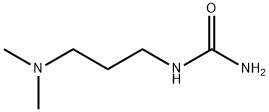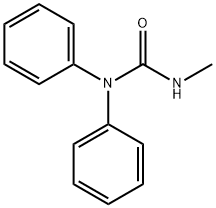UREA-13C
Synonym(s):13C Labeled urea;Carbamide-13C;Carbonyldiamide-13C
- CAS NO.:58069-82-2
- Empirical Formula: CH4N2O
- Molecular Weight: 61.06
- MDL number: MFCD00064398
- SAFETY DATA SHEET (SDS)
- Update Date: 2025-01-27 09:38:02

What is UREA-13C?
Chemical properties
White Solid
The Uses of UREA-13C
Labelled Urea. Physiological regulator of nitrogen excretion in mammals; synthesized in the liver as an end-product of protein catabolism and excreted in urine. Also occurs normally in skin. Emollient; diuretic.
Indications
Urea-13C is indicated for use in the qualitative detection of urease associated with Helicobacter pylori in the human stomach and as an aid in the initial diagnosis and post-treatment monitoring of Helicobacter pylori infection in adult patients. The test may be used for monitoring treatment if used at least four (4) weeks following completion of therapy. For these purposes, the system utilizes an Infrared Spectrophotometer for the measurement of the ratio of 13CO2 to 12CO2 in breath samples.
Background
Urea 13C is a urea molecule radiolabelled with the non-radioactive element carbon-13. It is currently used for the Urea Breath Test (UBT) and is available as a rapid diagnostic test (marketed as Pranactin-Citric) for the detection of Helicobacter pylori infections. H pylori is a common stomach bacteria that has been linked to a variety of upper gastrointestinal disorders such as gastritis, gastric and peptic ulcers, stomach cancer, and gastric mucosa-associated lymphoid-tissue (MALT) lymphoma. The UBT is indicated to confirm H. pylori infection and to monitor post-treatment for its eradication.
Radiolabelled urea is available in two forms as 13C and 14C. Both forms can be used within the Urea Breath Test, however some may prefer 13C as it is non-radioactive compared to 14C, which may be preferable in pregnant women and children.
The Urea Breath Test is based on the ability of the H. pylori enzyme urease to cleave urea into ammonia and carbon dioxide. As the urease enzyme is not present in mammalian cells, the presence of urease (and the products of urea cleavage) in the stomach is evidence that H. pylori bacteria are present. To detect H. pylori, urea labeled with 13C is swallowed by the patient. If gastric urease from H. pylori is present, urea is split to form CO2 and NH3 at the interface between the gastric epithelium and lumen and 13CO2 is absorbed into the blood and exhaled in the breath. Exhaled breath samples can then be collected and measured for the presence of radioactivity.
Definition
ChEBI: ((13)C)urea is a (13)C-modified compound that is urea in which the carbon is present as its (13)C isotope. It is a (13)C-modified compound and a one-carbon compound.
Metabolism
Not Available
Properties of UREA-13C
| Melting point: | 132-135 °C (lit.) |
| storage temp. | 15-25°C |
| solubility | DMSO (Soluble), Methanol (Slightly) |
| form | neat |
| color | White to Off-White |
Safety information for UREA-13C
Computed Descriptors for UREA-13C
| InChIKey | XSQUKJJJFZCRTK-OUBTZVSYSA-N |
New Products
3-Iodophenylacetic acid 3-Pyridineacetonitrile, α-hydroxy- 2-Propanamine, 1-chloro-, hydrochloride (9CI) 3-(hexyloxy)-4-(pyridin-3-yl)-1,2,5-thiadiazole 2-Hexyn-1-ol Dibenzo-18-crown-6 Nickel(II) perchlorate hexahydrate, 98% 4-Bromophenylacetonitrile, 95% 3-Bromo-4-fluoroaniline, 97% Sodium tetraborate decahydrate, 98% Palladium(II) acetate, trimer, Pd 99% 4-Bromo-2-chlorotoluene, 97% N N Dimethylformamide Dimethyl Acetal (Dmf Dma) 2,3-Dichloro Benzoyl Cyanide [Side Chain] Bis(2-Chloroethyl) Amine Hydrochloride L-Glutamic Acid Diethyl Ester Hydrochloride 5-(Difluoromethoxy)-2-Mercaptobenzimidazole 1-Ethyl-3-(3-Dimethylaminopropyl)-Carbodiimide Hydrochloride [EDC Hcl] 1,4-Napthoquinone Bromoiodomethane Sodium Bicarbonate Methylene Dichloride (MDC) Ethyl Acetate Indole-3-Carbinol (I3C)Related products of tetrahydrofuran








You may like
-
 Urea-13C CAS 58069-82-2View Details
Urea-13C CAS 58069-82-2View Details
58069-82-2 -
 Urea-13C CAS 58069-82-2View Details
Urea-13C CAS 58069-82-2View Details
58069-82-2 -
 Urea C 13 CAS 58069-82-2View Details
Urea C 13 CAS 58069-82-2View Details
58069-82-2 -
 17604-74-9 3-Pyridineacetonitrile, α-hydroxy- 98+View Details
17604-74-9 3-Pyridineacetonitrile, α-hydroxy- 98+View Details
17604-74-9 -
 Cyclohexane, (2-propynyloxy)- 67967-07-1 98+View Details
Cyclohexane, (2-propynyloxy)- 67967-07-1 98+View Details
67967-07-1 -
 2-Propanamine, 1-chloro-, hydrochloride (9CI) 98+View Details
2-Propanamine, 1-chloro-, hydrochloride (9CI) 98+View Details
5968-21-8 -
 3-Iodophenylacetic acid 1878-69-9 98+View Details
3-Iodophenylacetic acid 1878-69-9 98+View Details
1878-69-9 -
 132945-75-6 (S)-1-Boc-3-methanesulfonyloxy-pyrrolidine 98+View Details
132945-75-6 (S)-1-Boc-3-methanesulfonyloxy-pyrrolidine 98+View Details
132945-75-6
